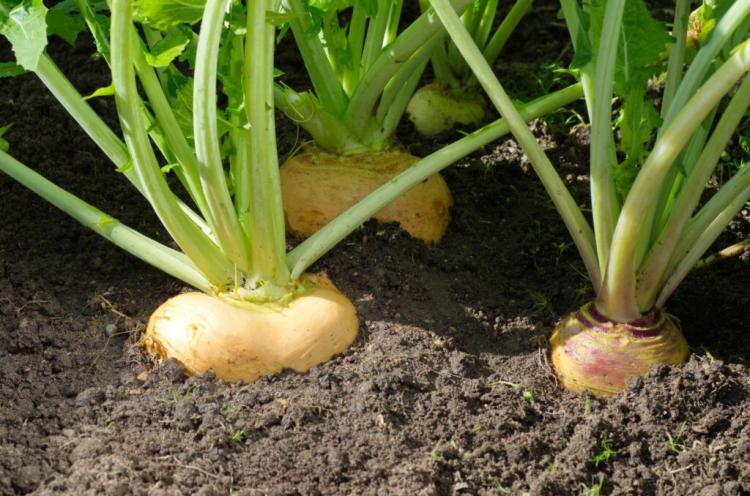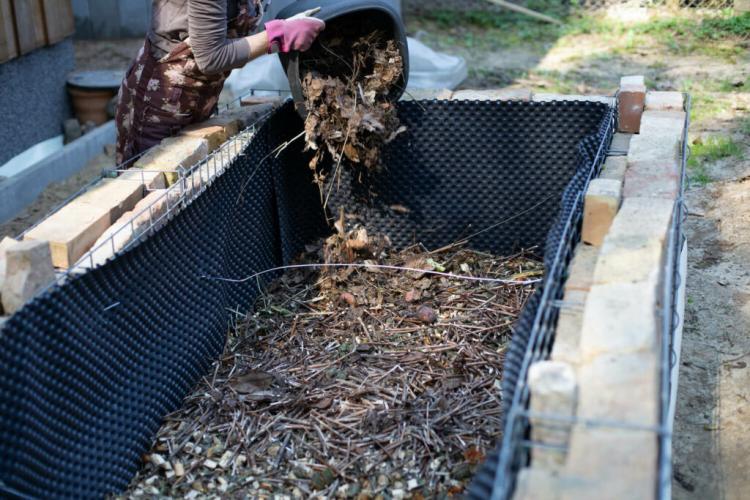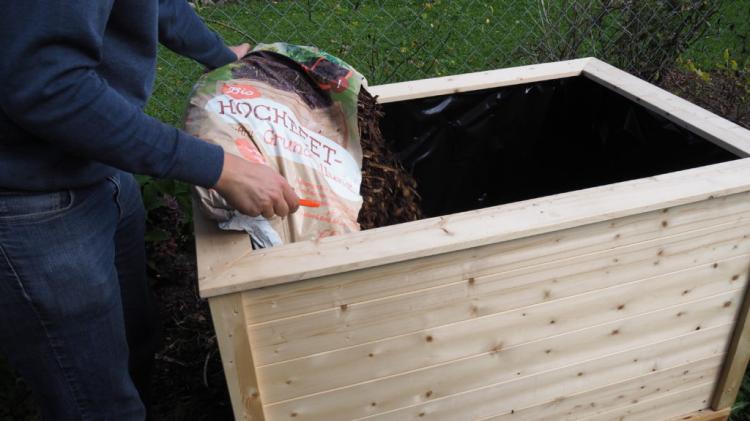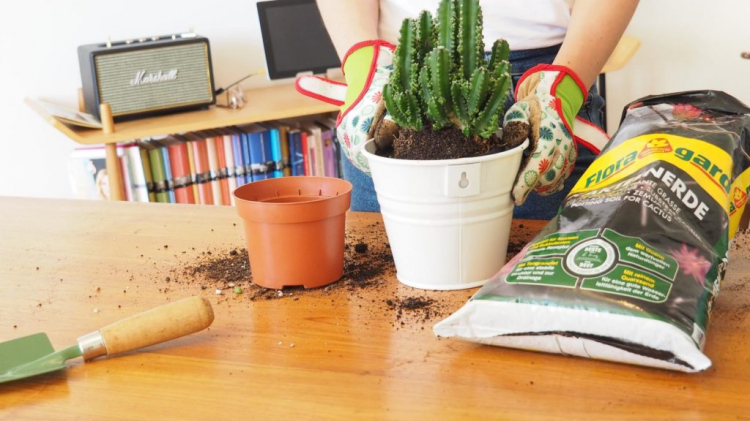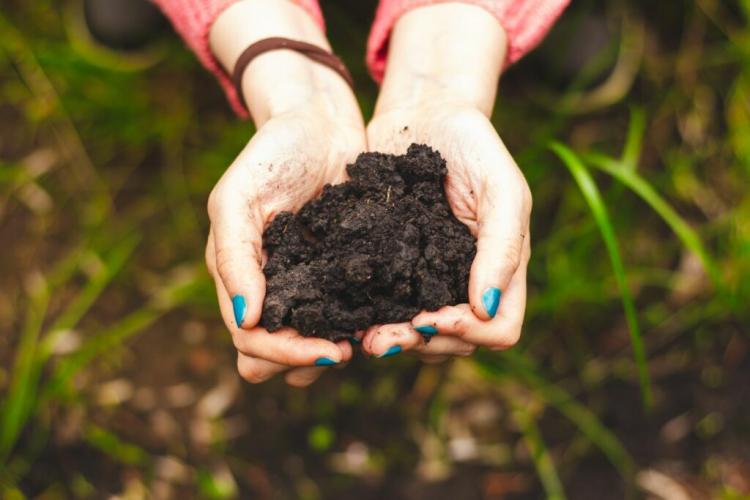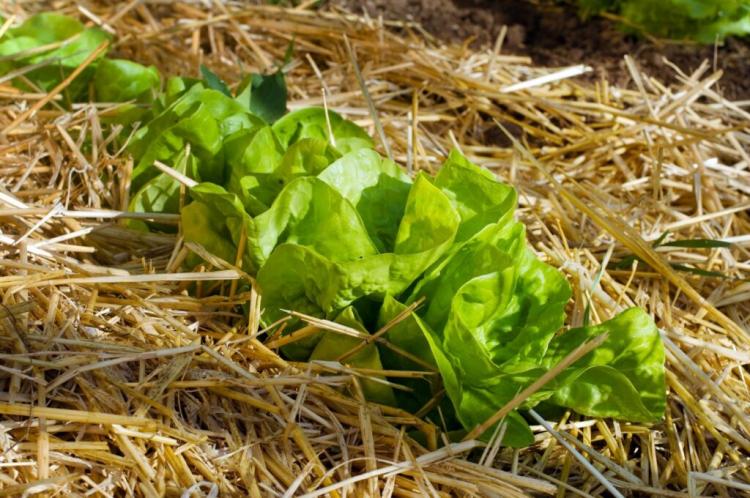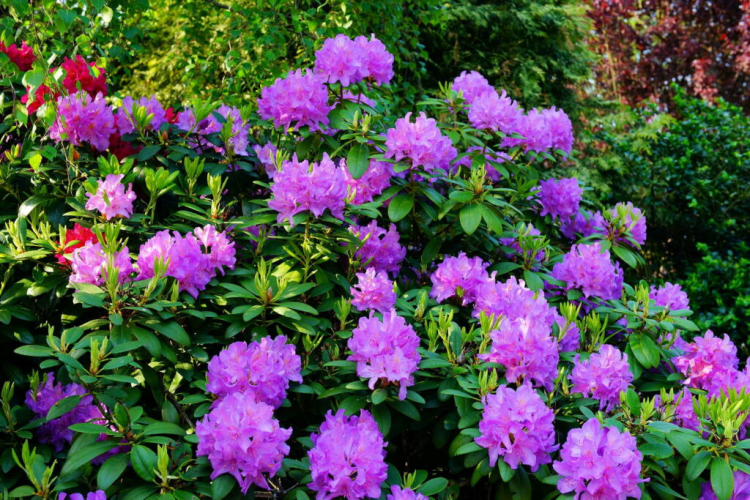Turnip: Expert Tips To Grow, Care, And Harvesting
The turnip is harvested from September and is, therefore, one of the winter vegetables. Here you can find out everything – from growing and harvesting the turnip.
Turnips ( Brassica napus subsp. Napobrassica ) are an old vegetable that has been gaining importance again in our gardens and kitchens in recent years. So that winter vegetables can find their way into your garden, we reveal everything you need to know about turnips. In our article, you will learn everything about their origin, different varieties, the perfect location, cultivation, care, and use of the delicious plant.
The turnips belong to the cruciferous family ( Brassicaceae ). They are a variety of rapeseed ( Brassica napus ), a rapeseed subspecies that produces beets. The turnip has many names: it is also called turnip, butter beet, kohlrabi, beetroot, or wruke. In Austria, it is called “Deutsche”, in Bavaria “Dodschn” and Switzerland “Knutsche”.
Because of its yellow color and sweet taste, it is also nicknamed the “pineapple of the north”. However, all these names refer to the same vegetable: a long underrated turnip that has been gaining more and more appreciation and attention lately. Rightly so, because the beets are easy to grow, provide a rich harvest in autumn and winter, and are also full of healthy ingredients such as vitamins, oils, and minerals.
You Might Also Like Companion Planting With Turnips
Turnip: origin and characteristics
Table of Contents
It is unclear where the rutabaga originally came from. It is probably a cross between Brassica rapa, a type of beet, and wild cabbage ( Brassica oleracea). The turnip probably came to Germany from Scandinavia in the 17th century. Today it is grown all over the world in all temperate climates. After the large potato harvests in 1917, the population was dependent on turnips for food.
At that time, they even published their own turnip cookbooks. It contained recipes for turnips in all variations: they were made into soups, casseroles, cakes, jams, and even coffee. After that, turnips were a rather unpopular vegetable and were mainly grown as animal feed. So that the beets are not completely forgotten, they were named Vegetable of the Year by the “Association for the Preservation of Crop Diversity” (VEN) in 2018.
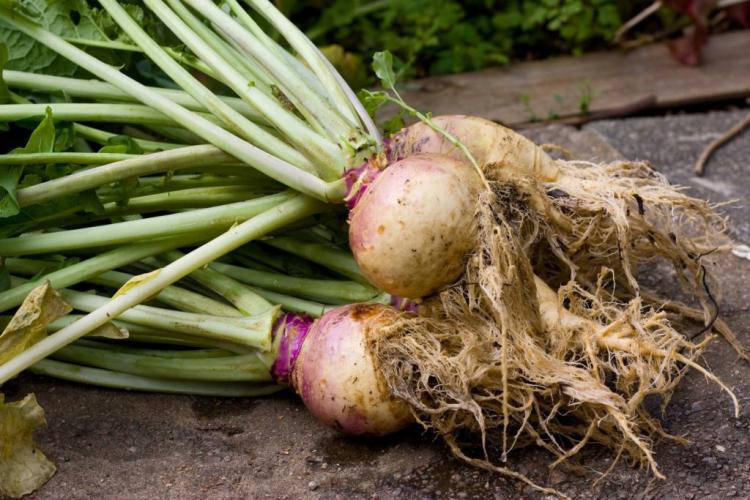
The turnip is actually a biennial plant, but it is only grown as an annual. There are varieties with greenish, yellow, and reddish flesh. The beet leaves have strong stems, the leaves are slightly wavy. Turnips do not bloom until the second year, which means that if you grow them for one year, you will not benefit from blooming turnips.
Turnip varieties
When choosing the type of turnip, the most important thing is the color of the pulp. In general, yellow-fleshed varieties are more suitable for consumption, because they taste better and have firmer meat. They are also full of beta-carotene, hence the yellow color.
You might so like: Growing lettuce: instructions for growing Lactuca sativa
Traditionally, turnips with white meat are grown more as animal feed, but there are also white-fleshed varieties with a very fine aroma. In fact, the turnip is characterized by a high variety of varieties. However, most of the rutabaga species that were grown in Germany up until the 1950s are considered lost. Most of the turnip varieties that exist today come from Western and Northern Europe.
Turnip varieties for growing in the garden:
- ‘Wilhelmsburger’: Green-headed variety and a rather new breed
- ‘Margress’: Blue-headed turnip variety with a mild aroma
- ‘Turin’: This variety is characterized by its white flesh and particularly large fruits
- ‘Spanish’ : green-headed variety
- ‘Marian’: Red-headed turnip variety with yellow flesh
- ‘Best of All’: This variety is particularly storable and has a purple head
- ‘ Helenor ‘: This variety has a redhead and yellow flesh
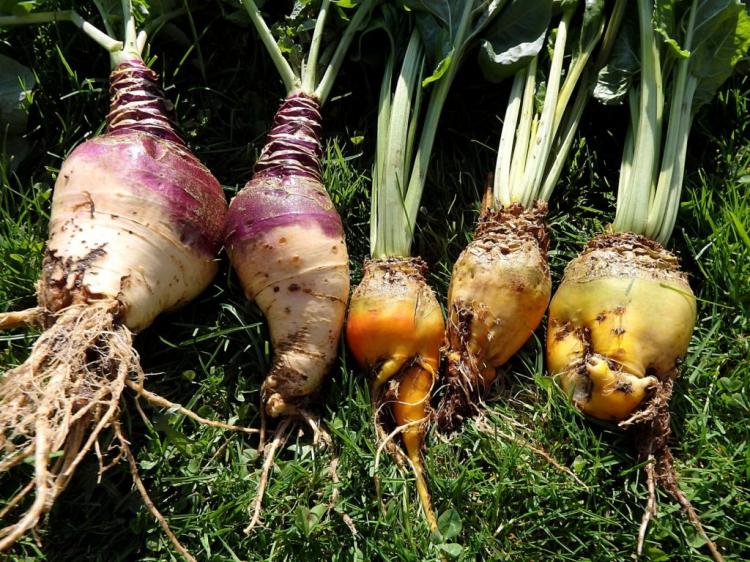
Buy turnips: you should pay attention to this
When buying turnips, you can fall back on seeds or young plants that have already been grown. However, sowing and growing your own turnip young plants is very easy and problem-free, so buying turnip seeds is a good idea.
However, if you decide to buy young plants, you should make sure that the plants are in good health, have no feeding spots, and make a vital impression. You can buy turnip seeds and young plants in well-stocked hardware stores, garden centers, nurseries, or on the Internet.
Grow turnips
Turnips are a grateful vegetable to grow in your own garden. You can reap a bountiful harvest with little effort. Nevertheless, you should be careful when choosing the right location and when sowing to be able to offer your turnips the best possible growing conditions.
Growing turnips: the right time
You can sow turnips directly outdoors from the end of May to the end of July. Bringing turnips forward is possible, but there are hardly any advantages.
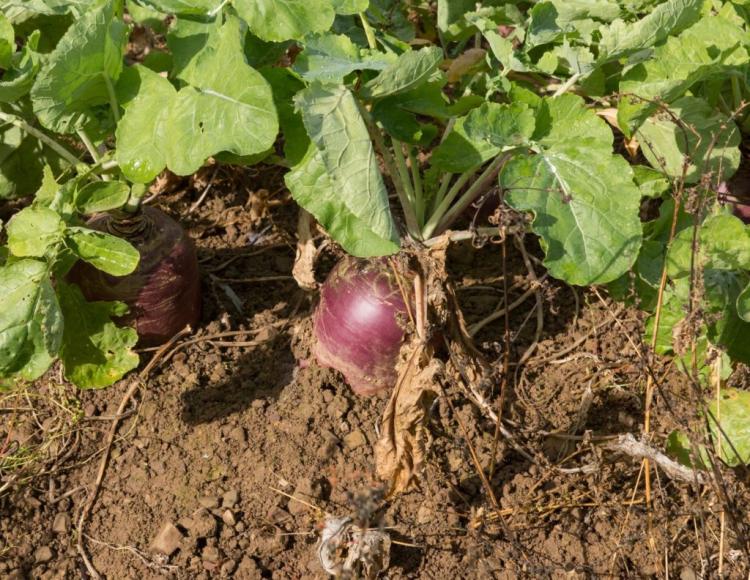
Growing turnips: the perfect location
Turnips love a sunny to partially shaded location. The optimal soil for the turnip should be moist and deep. You do the turnip a favor with humus-rich and loamy soil. Turnips are medium eaters, i.e. neither heavy nor weak eaters, and therefore only need soil that is moderately rich in nutrients. The optimal pH value for the turnip is neutral to basic and should be at least 6.8.
Summary location requirements of the turnip:
- Sunny to a partially shaded location
- Moist, deep soil
- Humus-rich and loamy soil
- pH value at least 6.8
Growing turnips: instructions
To prepare the bed well for sowing, remove any weeds, stones, or roots. Also, work humus-containing material into the soil. Compost, mature manure, and organic long-term fertilizers are suitable for this. For sowing, create a seed furrow half a centimeter to one centimeter deep. The seeds are deposited there at a distance of 40 to 50 centimeters. The distance between the rows should also be around 40 centimeters. Alternatively, you can sow the turnips more densely and separate them after they have emerged in the dicotyledon stage.
You might so like: Lovage Plants: Cultivation Of The Maggikraut In Pot And Bed
At a temperature between 15 and 18 ° C, the seeds germinate after seven to ten days.
Summary of planting turnips:
- Prepare the bed and enrich it with compost or organic slow-release fertilizer
- Create a seed furrow 1 cm deep
- Seed tray at a distance of 40 – 50 cm
- Distance between rows: at least 40 cm
- Germination at 15-18 ° C in 7-10 days
Maintain turnips
After planting, the turnips should be watered regularly. They prefer it to be permanently moist. Especially in the warm summer months of July and August, when you have sown your turnips early, they must be watered sufficiently and regularly. If it rains more in autumn and it gets cooler, you can reduce the watering and stop completely. You should keep the bed free of weeds and grasses, your turnips will thank you for it. Regular, loose chopping also stimulates mineralization and loosens the soil. If the turnips are larger, you should pile them up lightly and cover the heads of the turnips with soil. This will prevent the heads from turning green.
Turnips have a rather low nutritional requirement. This means that if you have already enriched the soil with compost or slow-release fertilizer when planting, you do not need to add any more fertilizer for the turnips. Otherwise, organic fertilizer is recommended two months after sowing. Organic universal fertilizer with long-term effects is ideal for this purpose, which promotes soil life and optimally covers the nutrient requirements of your turnips.
Summary of caring for turnips:
- Water regularly when young
- Weed and hoe regularly
- Pile up larger beets
- If fertilization was carried out during the planting, no further fertilization is necessary
- Otherwise an organic fertilizer application after two months
Harvest and store turnips
The time of harvest of your turnips naturally depends on the moment of sowing. The turnip harvest begins in September at the earliest. The longer the turnips stay in the ground, the larger they become. However, they also become less tender when harvested later, but they can be stored better. The beets survive moderate frost, briefly, they can withstand temperatures down to -8 ° C. By Christmas you should have pulled all the turnips out of the ground and stored them.
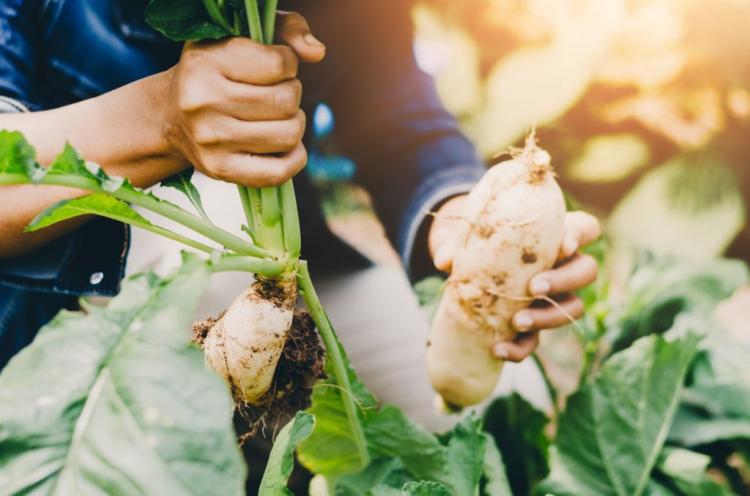
For harvesting, pull the beets out of the ground by the leaves or use a digging fork. Then the leaves are turned off. In the past, turnips were stored in a beet pile in the garden. For an earth rent, a pit at least 40 centimeters deep is dug and the ground is covered with five centimeters of sand. The vegetables are then placed in a plastic bin or box and covered with leaves and finally a wooden board. Alternatively, you can store your turnips in a box with sand in the cellar. The turnips should be able to be stored well until April and provide them with vitamins and nutrients throughout the winter.
Turnips: Ingredients and Uses
Turnips can be used in a variety of ways in the kitchen. Similar to potatoes, they can be served as a side dish or with other vegetables, made into a puree, or fried or deep-fried with french fries or pancakes. The turnip stew is of course a classic. Turnips are also great in a hearty winter soup. Fresh, young turnips can also be eaten raw and thinly sliced as a salad. Turnips contain a relatively high amount of sugar, but they also contain minerals such as potassium, calcium, and magnesium. It also contains vitamins B and C. Thanks to its high water content, the turnip is relatively low in calories despite the high amount of sugar: 100 grams contain only 29 kcal.
You might so like:
